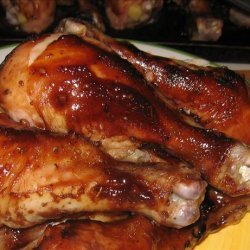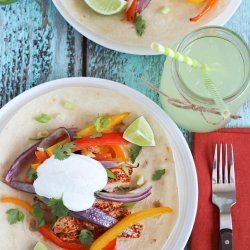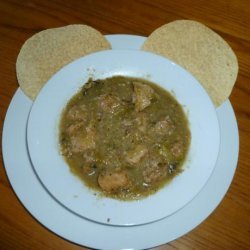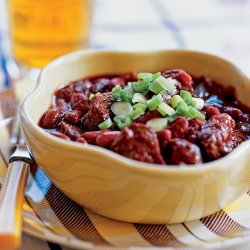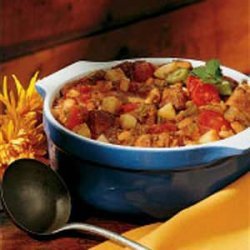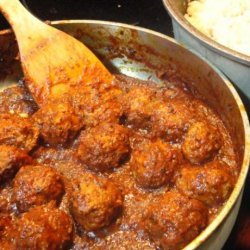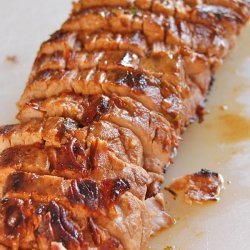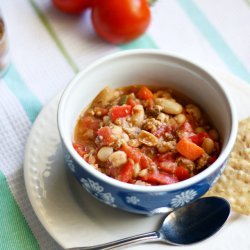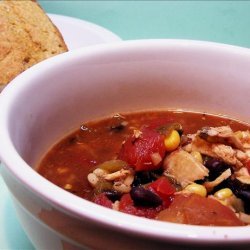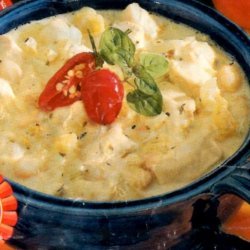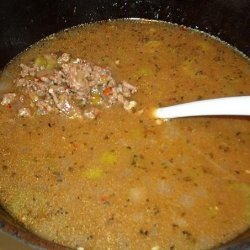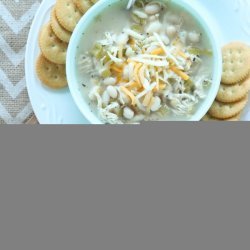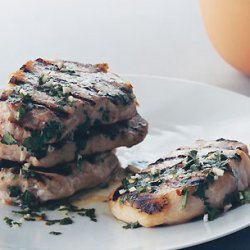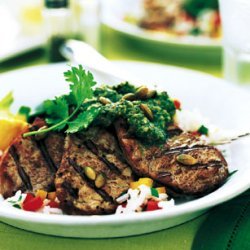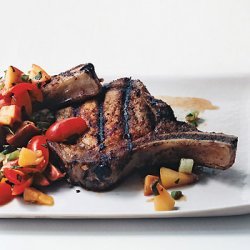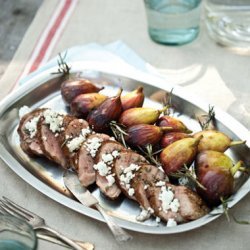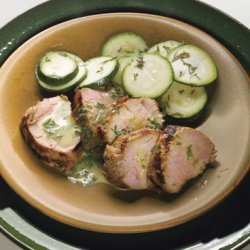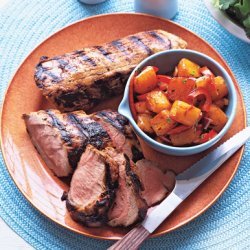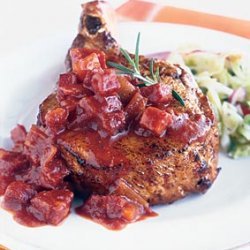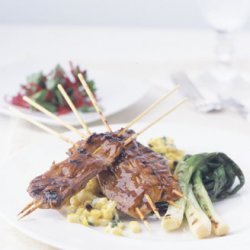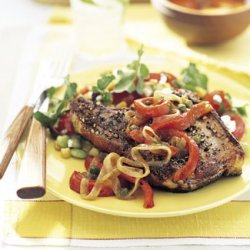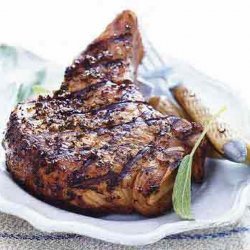Ingredients:
- 4 cups (1 quart) seville orange juice or 2 2/3 cups lime juice and 1 1/3 cup orange juice
- 2 onions, cut into rings
Directions:
- Prepare the marinade Mix all marinade ingredients in a bowl and let sit for 10 minutes.
- Marinate the pork If using a flavor injector (see cooking notes), strain half the marinade into a bowl, adding the strained-out garlic to the other half of the marinade. Use the injector to take in some strained marinade, pierce the pork with the tip of the needle, and inject it into the flesh. Do this all over the meat until the strained marinade has been used up.
- If you are not using a flavor injector, use a long, thin knife to create deep gashes all over the flesh and pour the marinade over the pork.
- Place the marinated pork in a deep bowl or container. Generously season the outside of the pork with salt and pour the remaining marinade all over it, spreading the onion rings all over the top.
- Cover well with plastic wrap and refrigerate for at least 1 hour or up to 24 hours.
- Boil the marinade for basting Remove the pork from the marinade and place it on a platter. Transfer the marinade to a saucepan, add the onions, and bring to a boil for 2 minutes. Remove from the heat and allow to cool. Place the boiled marinade and onions in a blender and puree until smooth. The marinade is now ready to use as a basting liquid.
- Grill the pork Before heating your grill, remove the pork from the refrigerator and bring to room temperature.
- Heat your grill to 550°F and close the lid. Wait at least 15 minutes before lowering the temperature to 300°F. Oil the grill grates with a vegetable oil-soaked paper towel held with a long pair of tongs.
- If your cut has the skin still attached, begin the cooking process with the skin side up (away from the direct heat).
- Grill your meat about 2 1/2 hours total. Turn the meat over once when you are one quarter through with the cooking time, again when you are halfway through, and once more when three-quarters of the cooking time has elapsed. The pork is ready when it reaches an internal temperature of 150°F on the grill (it will continue to cook when it's off the heat, raising the internal temperature to the desired 160°F).
- Cooking notes
- IngredientsSeville oranges A Seville orange is a bitter orange that is sometimes referred to as a sour orange. Its thick skin is pale yellow and its flesh contains many seeds. Due to its very sour taste, it is not an eating orange. In the event you cannot find Seville oranges, substitute a 2:1 ratio of lime juice and regular orange juice.
- TechniquesFlavor injector Cuban-style pork is very well seasoned both inside and out. A flavor injector, a kitchen tool that resembles a needle and syringe, is used to marinate the interior flesh of thick cuts of pork. If you do not have one, simply make deep gashes with a thin knife all over the meat and pour the marinade over and into the cuts.
- Injecting the flesh
- To prevent the garlic from getting stuck in the injector tip, strain half of the marinade and use that in the injector.
- When you inject the marinade into the pork, you will see a bulge appear close to the site of the injection. That is the marinade settling into the flesh. When the pork is cooked, you may see pockets of darker flesh in the areas where the marinade was injected; this is normal.
- Freezing citrus juice Because I use so much citrus juice in my cooking and insist on using only juice from fresh fruit, I always freeze leftover juice from recipes or from fruit that is just about to go bad for future use. If placed in an airtight container, citrus juice will keep for a few months. Simply thaw at room temperature before using.
- Advance preparation The marinade can be made a day in advance. All cuts can be left marinating for 24 hours.
- Adapted from Latin Grilling by Lourdes Castro, 2011 Ten Speed Press, a division of Random House, Inc. A Miami native, Lourdes Castro has served as a personal chef and nutritionist for high-profile clients, such as Cristina Saralegui and professional athletes, and as an associate of the James Beard Foundation. A highly regarded Latin chef and cooking teacher, Castro is the author of Simply Mexican and Eat, Drink, Think in Spanish. She currently teaches food science at New York University and is the director of the Culinary Academy at the Biltmore Hotel in Coral Gables, Florida. Find out more
Nutrition Facts
| Amount Per 1 Serving | |||
| Calories | 485.84 Kcal (2034 kJ) | ||
| Calories from fat | 197.56 Kcal | ||
| % Daily Value* | |||
| Total Fat | 21.95g | 34% | |
|---|---|---|---|
| Cholesterol | 217.68mg | 73% | |
| Sodium | 2330.2mg | 97% | |
| Potassium | 1261.95mg | 27% | |
| Total Carbs | 1.43g | 0% | |
| Sugars | 0.1g | 0% | |
| Dietary Fiber | 0.53g | 2% | |
| Protein | 69.21g | 138% | |
| Vitamin C | 0.3mg | 1% | |
| Iron | 4.3mg | 24% | |
| Calcium | 71.7mg | 7% | |
| Amount Per 100 g | |||
| Calories | 130.64 Kcal (547 kJ) | ||
| Calories from fat | 53.12 Kcal | ||
| % Daily Value* | |||
| Total Fat | 5.9g | 34% | |
|---|---|---|---|
| Cholesterol | 58.53mg | 73% | |
| Sodium | 626.58mg | 97% | |
| Potassium | 339.33mg | 27% | |
| Total Carbs | 0.38g | 0% | |
| Sugars | 0.03g | 0% | |
| Dietary Fiber | 0.14g | 2% | |
| Protein | 18.61g | 138% | |
| Vitamin C | 0.1mg | 1% | |
| Iron | 1.2mg | 24% | |
| Calcium | 19.3mg | 7% | |
* Percent Daily Values are based on a 2000 calorie diet. Your daily values may be higher or lower depending on your calorie needs.
Find out how many calories should you eat.
Get Your Recipe of Health!
Follow RecipeOfHealth on Facebook!


